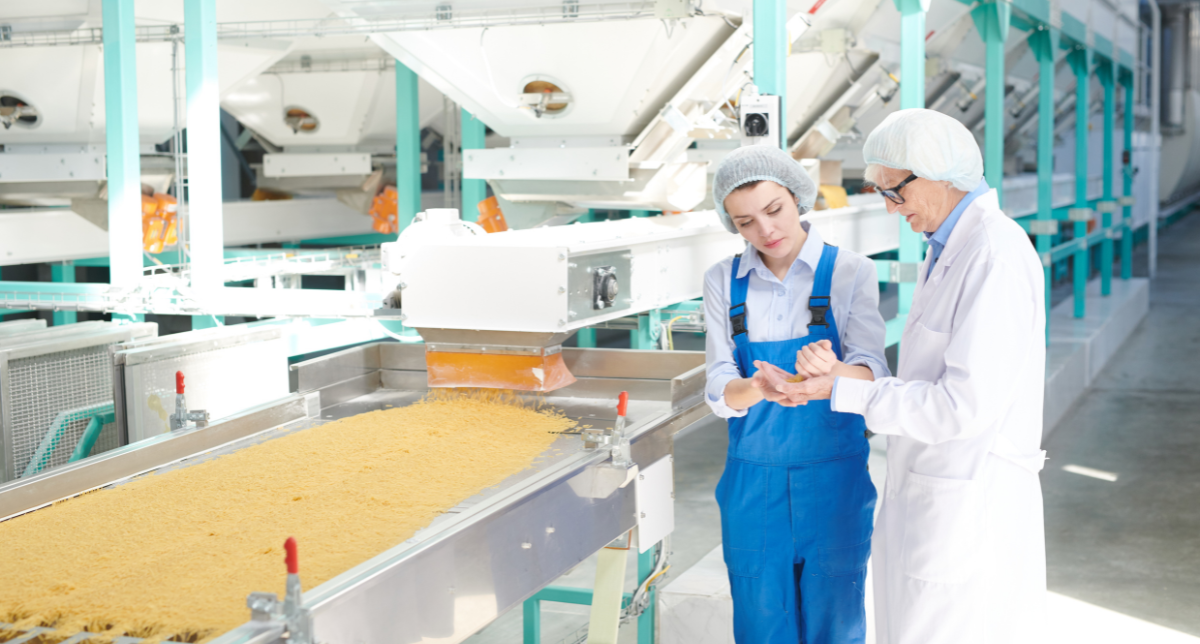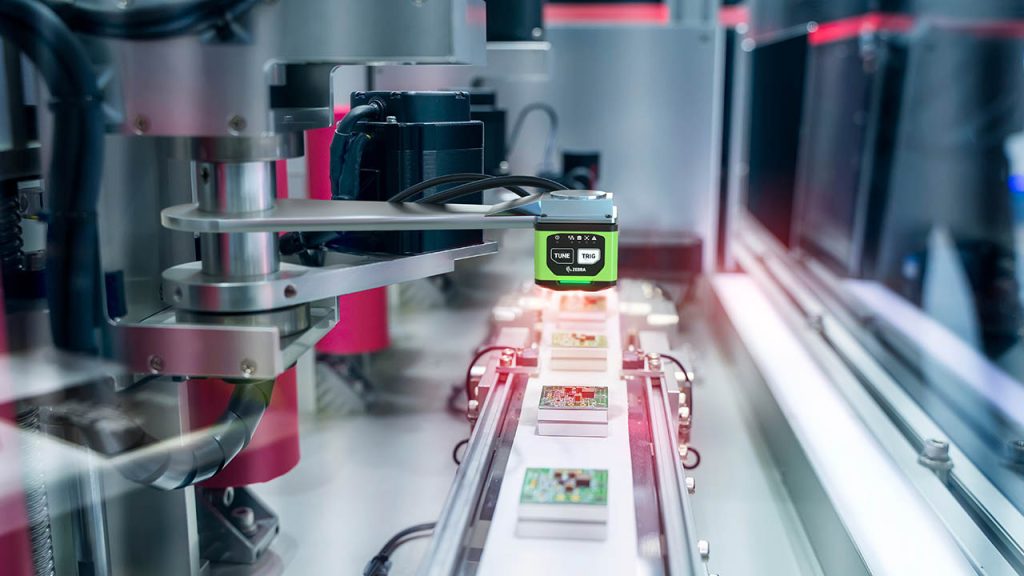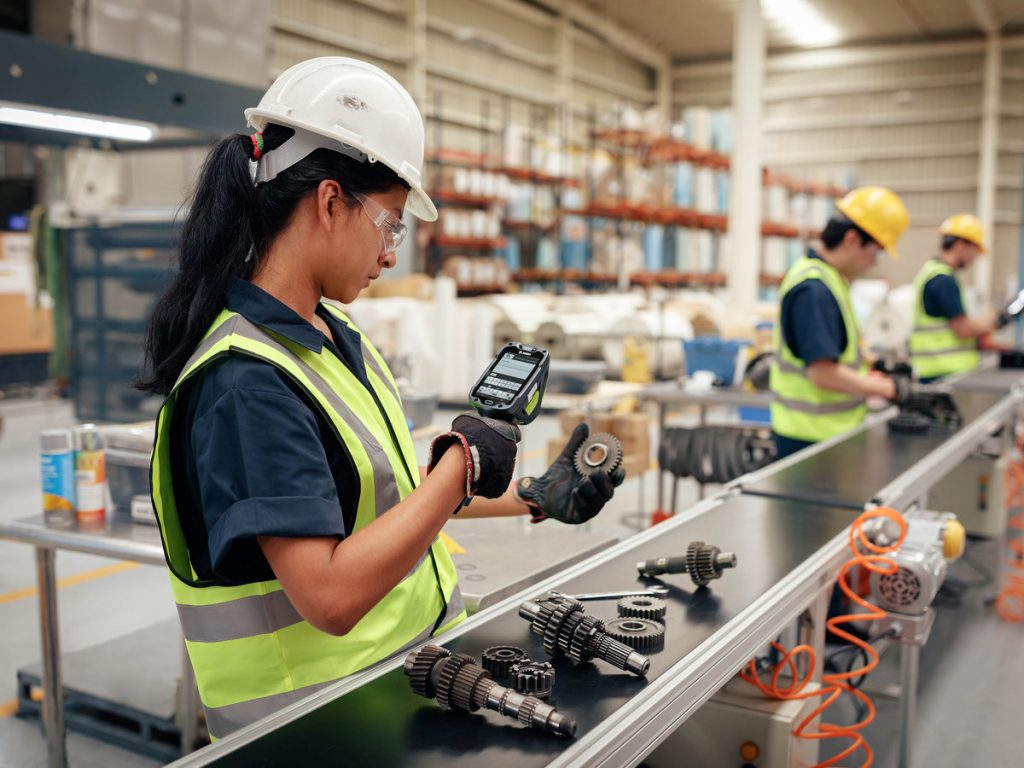How does a MES work

To get the maximum value from a MES system, it’s important to understand how it works in complex production scenarios. Here are a few advanced functionalities, essential for companies that want to optimize their operations.
Management of complex production flows
An efficient MES system must manage production orders, whether they are Make to Stock or Make to Order, with multiple stages and clear dependencies. For example, the system can block the start of the second stage until the first stage is completed or has reached a minimum volume of products. An advanced system can also intelligently allocate machines, allowing, in certain cases, the execution of multiple production stages in parallel on the same machine. For example, if we want to cut metal profiles at the same time for multiple orders, this can be done in the xTrack MES application from Axes Software. The xTrack MES from Axes Software is an application developed based on the latest IT technologies, standing out with its increased flexibility. It all starts from the basic concepts of the application.
Concepts of the MES from Axes Software
Production orders, as they are known in ERP, consider what is consumed and what is produced as a finished product. A MES type application must have the possibility for a production order to be broken down into production stages and/or operations. A production stage or operation is a phase of a complex order—for example, bringing raw materials to the necessary form or dimensions for a second stage in the production flow.
The production stages can be chained or branched into very complex structures. To track traceability and performance in production, it is necessary to break down into production stages as close as possible to the reality on the ground. A production stage is assigned to a machine. Certain production stages can consolidate stages from multiple stages if the finished product is common or has common properties. For example, if metal profile cutting is done, the cutting stages that use the same raw material can be consolidated.
Production orders can be imported from the ERP application or are generated automatically or manually directly in the MES application based on established principles such as stock, customer orders, sales forecasts, etc. A production order is automatically broken down into production stages and operations, and any consolidations can be done manually or also automatically. The stages will form the basis of planning.
Planning is a module that automatically establishes the start and end dates of each production stage, taking into account different relationships and conditions. Planning has as its first necessary element the execution priority of a production order and then of the production stages, a priority that is automatically calculated.
Production planning can also generate the planning of raw material supply as an additional benefit. Planning can undergo changes over time because certain unforeseen events can appear in the execution of previous orders. Precise planning depends on the correct configuration of a set of interconnected factors. The estimated day and time for the start of a production order will trigger in advance events such as the supply of raw materials to the production lines.
Machines are very important in a MES application. They are useful especially in planning, but also in organizing the activities of moving goods. Also, machines are tracked through reports for OEE and other indicators. A machine can have multiple workstations to which the necessary raw materials and materials are fed. Through configurations at both the item level and the machine level, the application automatically directs the raw materials to the corresponding station.
Recipes are defined at the level of each item. A recipe specifies what quantities and what items can, theoretically, be consumed for the production of a finished product item. These recipes can be defined in MES or can be imported from the ERP application, together with the item catalog. Each recipe also specifies the production stage at which a material must be consumed.
The technological flow — For each item, a technological flow must be defined, which is a succession of production stages. Practically, taking into account the data from the recipe and the FLOW, production orders are generated from xTrack MES. If the flow and the recipe are already managed by the ERP, they are no longer imported into MES. Instead, all stages are imported with all the relevant data, ready to be planned and executed.
Stocks. The MES system offers flexible management of raw materials and finished products. Stocks are managed at the lot level with expiration dates, supplier lots, and internal lots, if applicable.
More than just lot-level traceability, in the xTrack MES application, we manage stocks at the pallet level or even smaller packagings, for example, barrels. Each barrel can be tracked individually to allow for complete traceability, but also for ease of operation. It all starts with the management of raw materials and materials that are to be consumed. Raw material stocks can only be put into consumption if a quality verification stage has been passed.
For complex production flows that involve multiple stages and operations, the MES application also manages the stocks of semi-finished products. Highlighting these, also on quality levels, helps in defining reports, including OEE reports. The management is done at the cart or pallet level, and the semi-finished products can be stored for a longer period in a dedicated warehouse. The management of semi-finished products can provide additional information about the activity of operators at the machines. For example, an operator cannot report consumption if the goods are not present at the machine’s storage location, meaning someone must have moved them to that specific machine.
Finished products are the items that are delivered to customers. A quality verification process can also be implemented for these items. Stock tracking is done on pallets uniquely identified with GS1 type labels (the global standardization and coding organization, including using barcodes) with an SSCC identifier (Serial Shipping Code). Delivery to the client is done very simply by scanning the correct and de-quarantined pallets. The delivery documents, including compliance and quality certificates, are printed automatically with the data completed by the quality department.
Quality. As we said before, quality is very important in production flows. xTrack MES has a product quality management module. Quality can be specified at the production lot level or at the pallet level because during the production of food products, the values of quality parameters can change substantially.
For each item, the parameters (tests) that must be collected can be specified, along with the normal values, regardless of type (range, date, type, check mark). If the parameters are correct, the lot or the pallets can be released from quarantine. This quarantine is not a physical area, therefore the pallets do not need to be moved from one location to another.

Data collection. With a solid structure of concepts, as presented above in this article, xTrack MES also allows for production data collection in different ways to enable adaptation to all situations we encounter on the ground. Data collection must be done for both the raw material consumed and the resulting products, if we are referring to production stages. Among the data collection methods are:
- Scanning of GS1 or other standards barcodes, automatically, on the production line. Data is collected using fixed scanners on the line.
- Visual identification of products, especially for finished products. This method is used for the identification of produced items and any defects. A detected defect translates into a decision that is transmitted to the production line.
- Data acquisition from PLC, which have all kinds of saved data and which can be read using different protocols (OPC, ModBus, and others).
- Sensors (IoT) mounted on the machine for metering. These are used for both raw materials and finished products.
- RFID for finished products, especially for counting and unique identification upon entering stock.
- Portable terminals (Android terminals with a barcode scanner) for implementations where integrations with sensors or with the machine cannot be realized and operator mobility is necessary. Through the portable terminal, operations such as moving or allocating boxes to the machine can be implemented.
- Tablets are fixed, usually, on the machine. These can have both Windows and Android operating systems. The fixed tablet allows freedom for operating the machine, signaling the anomalies found by taking data from the machine. For example, the tablet can signal an automatically rejected part, and the user can declare additional data about this rejected part.

Integration with ERP. As we also specified previously, much of the basic data is imported from the ERP, as well as the production orders. One of the most important advantages of xTrack MES is that it facilitates the calculation of production costs by exporting the data directly to the accounting application. The data that we send to the ERP is the actual data and brings clear benefits to the accounting department. First of all, the system offers increased clarity in cash flow forecasting, due to cost calculation and a clearer management of raw material and finished product stocks. Production can be realized JIT (Just In Time), thus optimizing the entire process.
Measuring efficiency with OEE
Another fundamental aspect of a modern MES is the ability to calculate performance indicators such as OEE (Overall Equipment Effectiveness). This metric combines three key elements: availability, performance, and quality. We find all these components in the set of functionalities of the xTrack MES application and, in conclusion, they are easy to calculate and are available in different forms.
Availability: How long the machine effectively worked.
Formula de calcul:

A score of 100% for availability means that the machine worked for the entire scheduled duration.
Performance: How fast the machine produced compared to its maximum theoretical speed.
Formula de calcul:

Or, alternatively:

A score of 100% for performance means that the machine worked at its maximum speed.
Quality: How many compliant products were manufactured in relation to the total number of products.
Formula de calcul:

A score of 100% for quality means that all the products manufactured were compliant.
How to calculate OEE
After you have calculated the three components, OEE is obtained by multiplying them.
Example:
Availability: 90% (0.90)
Performance: 95% (0.95)
Qualiy: 98% (0.98)
OEE = 0.90* 0.95*0.98 = 0.8361
OEE = 83.61%
This result shows that, of the total planned time, the machine was productive at a rate of 83.61%
A MES system, such as the one from Axes Software, collects real-time data about the start and end of production, the number of compliant products (OK), and the number of rejects (SCRAP), associating all this information with the operator who logged in and with the machine.
Conclusion
In an increasingly complex industrial environment, a high-performance MES system becomes essential for the efficient coordination of production processes. This is not just a digital tool – it is a strategic pillar that supports the agility, scalability, and competitiveness of any production unit.
Discover here the benefits, modules, and functionalities of our xTrack MES application.
📞 Ready to take the step toward a smarter production? We are here to help you implement the right MES and to simplify the processes. Write to us!


